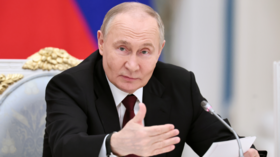Demographic time bomb to burst soon?
While investment into Russia is currently spurring economic growth, the country’s population is shrinking rapidly, which poses a major threat to long-term economic development.
In his state-of-the-nation address in May, President Vladimir Putin said boosting the country's population was Russia’s priority. And some say they found the key to reversing the downward trend in the population.
Aleksey Zubets, the head of the Centre of Strategic Research at Russia’s state-owned insurance company RosGosStrakh, says the solution is simple: triple real income levels for each family member in Russia, and people will start having more children.
“The income of about $US 1,200 a month is the level at which people in this country say to themselves that they feel comfortable enough to have a second child,” Mr Zubets believes.
Last year, Russia’s GDP grew more than 6%, surpassing the rates in all other G8 members and marking the country's seventh consecutive year of growth. This has led to rapid increases in real wages and disposable income. But some experts say it’s not enough to entice Russians to have more kids.
“Ironically, it’s really the poor countries that tend to have larger families. Even within Russia we see that largest family size is in the poor republics of Southern Federal District. Greater wealth typically leads to more family planning and smaller family sizes. We see that in Europe, we see that in the United States,” says John Litwack, World Bank Lead Economist.
And Mr Litwack says boosting birth rates now will do nothing for patching up Russia’s workforce gap in the immediate future.
“Russia had particularly low birth rates in the late 80s and in the 90s, and that’s the generation that now is coming of age. There are various different kinds of projection but many are projecting about 70% decrease in the population by 2050,” he says.
The only way out, the expert believes, is to import workforce.
“Migration is going to be the key. Some of this migration could be internal migration – there are still more people then should be stocking in remote cold areas and they can migrate internally. But still Russia will also need a strong inflow of external migrants to sustain rapid growth in the country,” Mr Litwack suggests.
About 100 people die in Russia every hour. With fertility rates falling under 1.2 children for every woman – well below the rate of 2.1 children needed to reach the so-called replacement level – Russia may have a hard time sustaining economic growth going forward.
Russia’s demographic crisis began in 1993 after the transition to a free-market economy shattered the stability of millions of Russians. Today the population is decreasing by an average of 700,000 people a year, posing one of the biggest threats to Russia’s economic growth.











